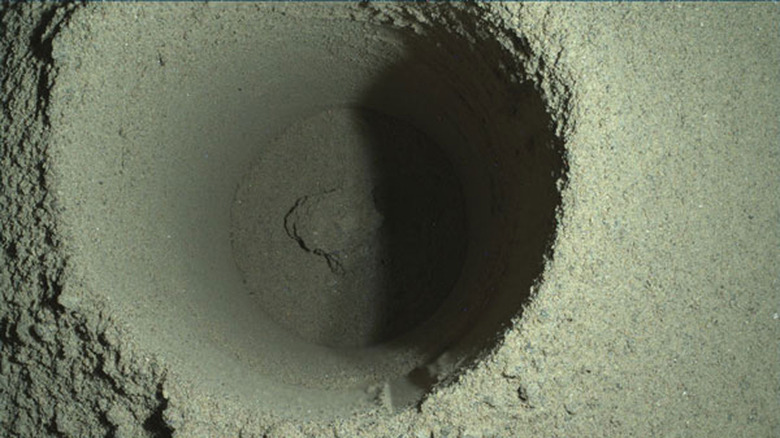NASA Talks About The Mysterious Missing Perseverance Rover Sample
Friday, August 6, was the very first attempt by the Perseverance rover to bore into the rocks on the surface of Mars and collect a sample. Everything went as planned when the commands were sent to the rover to collect its first sample. The drill bored into the rock to the desired depth and successfully moved the sample tube into the Adaptive Caching Assembly (ACA).
Scientists received confirmation that the sample tube had transferred successfully from the corer to the ACA and was placed in storage. However, when the second data set arrived from the rover, volume measurement and post-measurement imaging indicated the sample tube was empty. NASA spent the next few days investigating what happened between telemetry and imaging confirming a sample tube had been collected and follow-up data indicating the sample tube was empty.
NASA says its investigations have concluded that engineering telemetry gathered from the corer shows that its performance during abrasion and coring activities performed as intended compared to data when Earth testing was conducted. Scientists have also confirmed that imaging of Perseverance's path traveled after completing coring activities did not find any intact core or core pieces on the surface of Mars.
The mission team was able to take depth measurements of the borehole by merging image products from WATSON with the image itself to conclude that coring activity in the unusual rock produced only small fragments and powder. They don't believe the powder or small fragments were retained due to their size and a lack of any significant core chunks.

The researchers believe the rock chosen for the first sampling attempt wasn't strong enough to produce a core. In the close-up image of the borehole, we can see that there is some material in the bottom of the hole. The core they hoped to obtain is either in the bottom of the hole, in the cuttings pile stacked around the hole's rim, or is a combination of both places. Ultimately, NASA believes it was the properties of the rock that prevented a core sample from being collected and not a fault of Perseverance. The next sampling attempt will be conducted in September.
